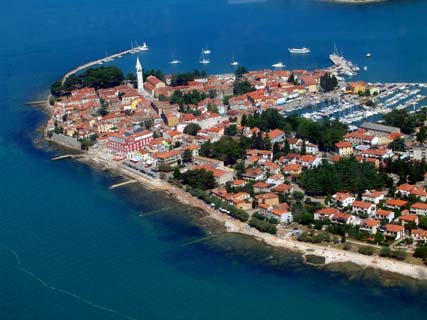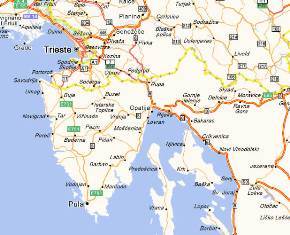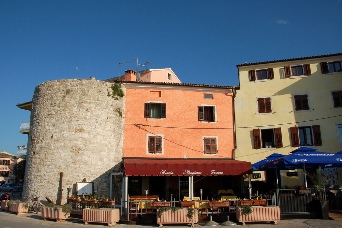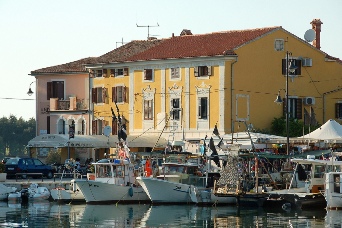

Where is Novigrad
Novigrad is a town and port at the western coast of Istria. Old town is situated on a small limestone peninsula. The position provides favourable shelter due to which the location was inhabited in the early times. The port is protected from all winds, except the westerly and north-westerly winds which raise waves. Tarski bay is the mouth of the river Mirna as it flows into the sea. In history it has been designated a possible Greek colony; afterwards in Roman times the settlement Emmonia (Emona) was located on the broader locality of todays Novigrad.
History of Novi grad
In the VIIth century during Byzantium rule it was called Neapolis (Civitas nova).
It was during this century that the Slavs settled the area. From 1278 it was under the rule of Venice. Back in the VIIth century Novigrad had become a see of a bishopric. It lost this designation in 1831.
 During the Venetian reign Novigrad was an important harbour for transporting wood and continued to be one up to the WVIIth century when it was destroyed by the Turks. A number of valuable partician homes and palaces from the period between the XVth to the WVIIIth century have been perserved in the city. Todays parish church of St Pelagio is the former threenaved cathedral which was built in VIIIth century. During the years 1746-1775 the building underwent an extensive renovation in the Baroque mode but it has partially retained its earlier construction.
During the Venetian reign Novigrad was an important harbour for transporting wood and continued to be one up to the WVIIth century when it was destroyed by the Turks. A number of valuable partician homes and palaces from the period between the XVth to the WVIIIth century have been perserved in the city. Todays parish church of St Pelagio is the former threenaved cathedral which was built in VIIIth century. During the years 1746-1775 the building underwent an extensive renovation in the Baroque mode but it has partially retained its earlier construction.
 One of the rare Istrian country complexex to be situated in the immediate vicinity of the sea was built in Dajla, somewhat to the north of Novigrad. This was the center of the land holdings of the Grison family. In 1775 count Santo Grison built two harmonious Baroque buildings which joined as they are, form a yard. From this yard one exits through the decorated portal onto the seashore with a private small stone quay. A church was built on one of the longer sides of these buildings and on the opposite one an apartment for the chaplain. Both buildings have the same identical Baroque facade. At the beginning of the XIXth century count Griston erected at the rear end of the garden a representative building in the Classicist style with a triangular gable on the facade.
One of the rare Istrian country complexex to be situated in the immediate vicinity of the sea was built in Dajla, somewhat to the north of Novigrad. This was the center of the land holdings of the Grison family. In 1775 count Santo Grison built two harmonious Baroque buildings which joined as they are, form a yard. From this yard one exits through the decorated portal onto the seashore with a private small stone quay. A church was built on one of the longer sides of these buildings and on the opposite one an apartment for the chaplain. Both buildings have the same identical Baroque facade. At the beginning of the XIXth century count Griston erected at the rear end of the garden a representative building in the Classicist style with a triangular gable on the facade.